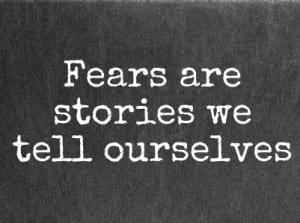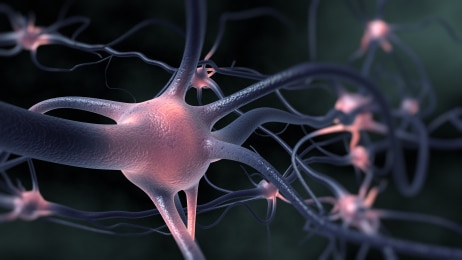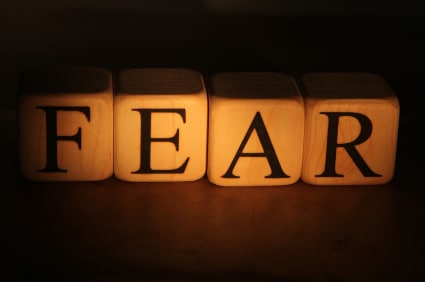In 99% of the cases, when hearing about ‘protecting your capital’, what’s being discussed is your financial capital, or money in the account. But when do you hear about protecting your mental capital?
Unfortunately there is very little discussion about protecting your mental capital. And yet, it can often be more important than protecting your actual capital (i.e. money).

What is Mental Capital?
Your mental capital is very much like an account balance reflecting the strength (or weakness) in your self-image and trading mindset. A good example is confidence, or lack thereof. Some other ingredients which affect/are part of your mental capital are;
Doubts
Fears
Beliefs (positive, limiting or negative)
Impatience
Self-esteem
Laziness
Discipline
Focus
Awareness (both self, and in the moment)
Beating oneself up
Negative or Positive Language
Mental Toughness
Your mental capital is something (just like your risk capital) that has to be protected and built up brick by brick. However, there are no mathematical formulas to help you with this. The two things that affect your mental capital the most are 1) You and 2) Your environment.

Ways to Protect Your Mental Capital
There are many ways to protect your mental capital, of which, I’ll share a few simple techniques here;
1) When in a trading slump, go for smaller, more achievable goals
We’ve all gone through losing periods, but the longer they go, the more potential they have to affect our mindset. Sometimes you just need to get a few winners to build your confidence back. If getting 2R on a trade just seems out of reach, try going for 1.5R, or 1R. Just nailing a few wins can do magic for your confidence and beliefs. Its an external confirmation to your mindset you can make good trades. When this belief comes back, you start to find yourself making better trades.
2) Avoid beating yourself up
This takes awareness in the moment, so anytime you catch yourself doing this, you have to stop the negative self-talk. Instead, think about things you do really well. Think about something which you’ve overcome in your life. By recognizing your strengths, you start to engage them more, while replacing the negative self-talk. It’s a more constructive thought process to engage in and helps to strengthen your trading mindset.
3) Take on less
Maybe you are trading 3-4 systems across several time frames and instruments. If you cannot perform consistently at this level, reduce what you take on. Trade less systems, instruments and time frames. Try doing a few things, or even just one system really well. When you start to perform well with that one system, winning more trades and making money, you start to create a positive belief you can do this. This leads to a confidence which you can then use taking on just a bit more, very much like lifting weights.
In Conclusion
These are just three simple ways to protect your mental capital, and there are many more developed methods, techniques and ways to do this. One example is ERT training, which helps to re-wire your brain and remove those limiting beliefs.

Not protecting your mental capital will only lead to negative emotions, beliefs and habits. But protecting your mental capital will help you build constructive and positive trading habits that ultimately lead to better trades. There is nothing more powerful than someone who believes in themselves. All great performers have this. Your goal should be to become that person.
Tag Archive for: ERT training
Tell me if this trading situation below has happened to you before.
You’ve just had your largest loss ever (or big one), and you are feeling incredibly risk averse, almost to the point where nothing looks good to trade. With each new setup that comes, you find yourself still recalling that big loss and hesitate, or fail to pull the trigger.
This common experience amongst traders has a biological root, and most often creates a negative psychological effect on you. These biological and psychological causes can have a tremendous impact on your trading mindset, perhaps writing the future history for your trading career. The good thing is, your brain and trading future can be changed.
Biological Reactions to Stress in Trading
Losses no doubt can have an effect on your trader psychology, but also your biology and brain. Cumulative losses can create a huge increase in cortisol in your system. Too much cortisol over a long enough period can cause neurons to fire, where you can no longer concentrate effectively to make a good trading decision.
But take a huge loss, and now your brain is likely re-wired for more losses – minimally in a poor state for trading.
What Happens When You Take A Huge Loss?
There are two regions of the brain that work together in remembering stressful events. They are the ‘hippocampus‘ and ‘amygdala‘. We’ve actually talked about the amygdala and how it impacts your trading which you can read about here.
To clarify between the two, the hippocampus will record the factual details of the big trading loss, while the amygdala will encode the emotional significance of it. Both of these are affected by stress, which releases stress hormones that can heavily affect brain performance.
Now as stress and cortisol levels rise, with continued exposure, our tendency to recall any trading events stored during this neurological state increases.
For a really good graph about performance and a stress curve, see the graph below.
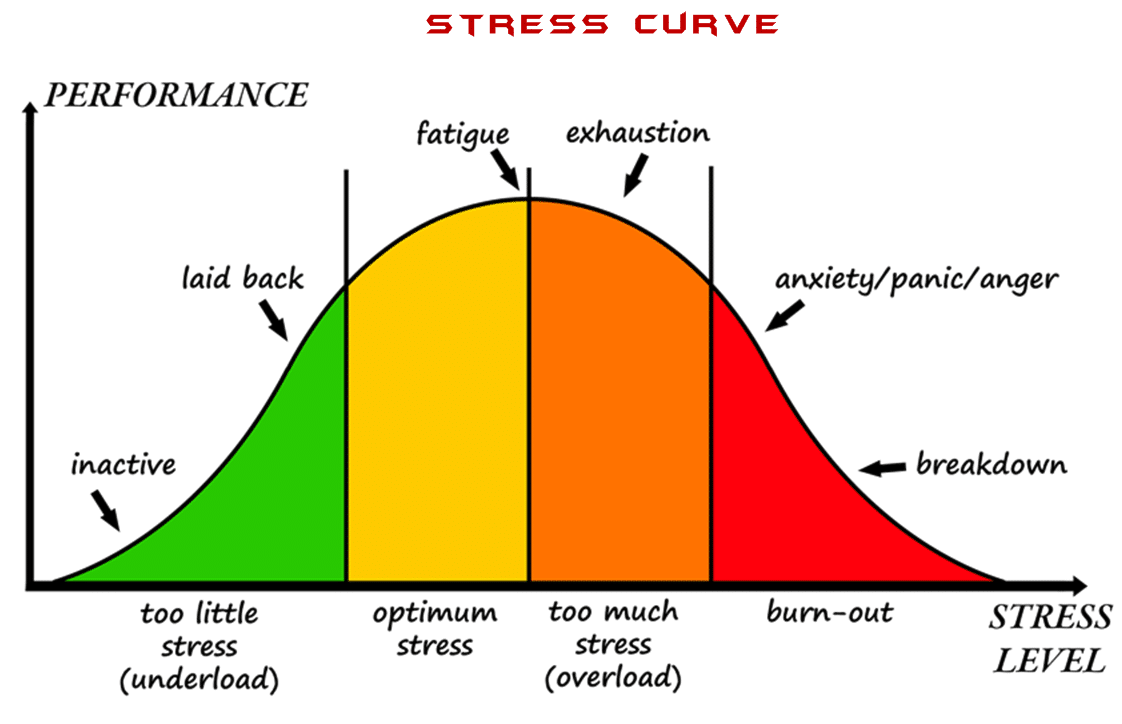
Getting back to the big loss, the experience becomes quite intense emotionally, almost as if it was burned into your brain. This is because of the intensity of those hormones present during this loss. This imprinting in your mind becomes corrosive to your trading, particularly your mindset.
You start to remember negative experiences, that may or may not have anything to do with trading. Just recalling these memories will affect your performance, but there are additional consequences.
Anytime you are analyzing the price action in real time and a new setup forms, you will with greater intensity, draw upon those negative feelings and memories, one of them being the big loss itself. This only makes you increasingly risk averse and afraid to lose, almost to an irrational level. This could happen despite a high-quality signal being right in front of you. In essence, you become paralyzed by this risk aversion, unable to pull the trigger.
Another scenario could be that you are ‘shell-shocked‘ from the trading loss, yet still are able to make a trade. Unfortunately, your trading decisions are totally off kilt. You think you see setups, and start making trades, only later to realize there was no price action setup at all. While reviewing your trades, you actually see now there was no pattern at all.
This is from a biological reaction to the stress you experienced. In some traders, without the proper tools, it becomes so damaging, that it affects them for weeks, months, perhaps even years. Some traders may never even recover from this. Even though that huge loss was ions ago, you still remember it vividly and often recall it when trading. Has this ever happened to you before?
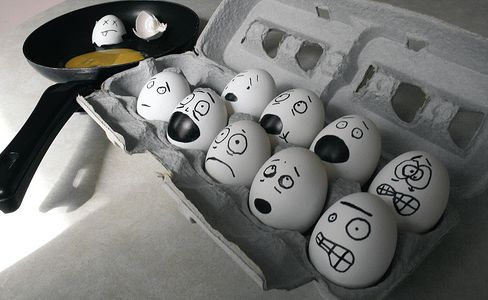
If so, do not worry, as most have had this experience.
Can You Change This?
The good thing is you can re-wire your brain, almost like re-writing your hard drive on a computer. Neural connections can be rebuilt and tuned for success. You can also build new connections which overpower this experience, to regain your confidence and make great trades.
One Way to Change Your Brain for Success
One of the best ways to re-wire your brain for success, and erase these negative trading experiences is to enter a ‘Whole-Brain State‘. This is where your brain operates in an integrated balance. Your left and right hemispheres are working well together. You are not pumping unnecessary stress hormones into your system. You avoid entering a ‘fight or flight‘ response, or being overly emotional, or too intellectual.

In essence, your brain operates in a balance which the Whole Brain State induces. When you think about it, which state would you want to be in for trading? A fight or flight state? Being too intellectual or emotional? Having massive amounts of stress hormones pumping through your brain? Or be in a balanced whole brain state?
Yoga and meditation are notorious for helping to put you into a whole brain state, while tuning your central nervous system.
Another powerful method is ERT Training, which we’ve specifically built for traders. If you’ve had similar experiences to the ones I listed above, and still keep recalling negative trading experiences even today, then you’re likely not in a whole brain state. But if you want to learn how to be in a whole brain state while trading, then you definitely have a tool to build a successful trading mindset.
Have you ever failed to the pull the trigger, even though your ideal setup was right in front of you? What about feeling paralyzed to hit the buy/sell button after a big loss? Have you noticed how your mind tends to race right before you fire off a trade as you think about your last loss?
All of these debilitating experiences tend to follow our fears, particularly being afraid to lose. Ironically, our ‘being afraid to lose’ often times goes beyond the potential loss of money. In most cases it has to do with something beyond the pure dollars at risk. In many cases, it becomes one of the primary hurdles a trader faces and never overcomes.
This article will first go into the underlying reasons why we are afraid to lose. Then I will share a method how to transform this fear to enhance your trading performance.
Behind The Curtain
In reality, there are several ‘reasons’ why we experience being afraid to lose when we are trading. A few examples are;
a) Perhaps we have an unconscious fear of making a mistake and what that might bring (i.e. a parental punishment)
b) We fear the potential loss in money and our ability to make it back
c) Making another mistake will only confirm our suspicion that we cannot trade
I could probably spend an entire day listing dozens of reasons why we experience this fear. But behind the curtain of it all I find are two variables which remain constant;
1) The anticipation of what has yet to come
&
2) An unconscious or limiting belief that perceives the potential outcome as a threat, dangerous or painful
The first one is something the Buddha once said, that ‘Fear is the anticipation of what has yet to come‘. Imagine if we approached our next trade and had no anticipation of what was to come next. We just trusted our system and pulled the trigger, then let the system play itself out.
More than likely you’d experience a lot less emotions and the debilitating physical responses that tend to affect our thinking. Although many people get this idea ‘intellectually’, it is easier said than done. Often it takes years of practice, training and experience to have happen moreso than not.
As to the second one regarding ‘unconscious or limiting beliefs’, most of the time, we are not just trading the price action setups in front of us – we are also trading our thoughts and beliefs about money, our ability to make money, what our perception is of our P&L, our current trading skill, and more. In most trading situations, we are not just trading setups at key levels – we are trading our unconscious limiting beliefs + our motivations for why we are trading.
How To Transform These Fears
There are three things you can do help reduce and transform these fears. They are;
1) Expand Self-Awareness
2) Awareness Practices In The Moment
3) ERT to Remove Unconscious or Limiting Beliefs
Expanding Self-Awareness
The first step to expanding your self-awareness is to recognize how our thinking, emotions and perceptions in the moment affect our interpretations of things, particularly related to trading. When you do this, you begin to realize how these ‘perceptions’ of your trading will color your experiences and memories around trading. This can have an empowering or debilitating effect on your trading performance.
A trading journal also helps us to see how our trading behaviors often repeat, and thus help us to become aware of the mistakes we make frequently. This is to help keep us honest and in check about how we are really doing from day to day.
Awareness Practices in the Moment
One awareness practice that helps us in the moment is a silent meditation practice. I am not talking about a guided visualization, but a mindfulness practice designed to help us become aware of our mind, thoughts and mental activity in the moment. By sitting every day before you start trading, you can calm your mind and see how the traffic of thoughts can affect your trading.
If you think your mind is busy while you are just sitting trying to focus on your breath while little to nothing is going on – imagine what its like during trading?
Meditation and mindfulness practices shed a light on how our mind works and is working in the moment. By having a contextual experience of calm, clarity and focus, you can recognize when you are not calm, clear and focused.
Also, meditation and mindfulness practices help tremendously in expanding your self-awareness, so taking out two stones with one.
ERT to Remove Unconscious / Limiting Beliefs
Sometimes we have unconscious or limiting beliefs which interfere tremendously with our trading. If you find yourself repeating the same mistake without knowing why, in 99% of the cases, it has to do with an unconscious or limiting belief.
Our mind stores memories like a bunch of pictures stuffed in a shoebox, so your memories around money when you were a kid could be right next to your memories around trading. Activating memories of one can excite the other, and thus affect your trading performance in real time.
These often take the longest to uncover, transform and remove, and could take years of both meditation and awareness practices. One short cut to this process is ERT Training which helps you to discover and transform them quickly. We actually have an ERT Training program specifically built for trading. Many traders have already gone through the program and noticed tremendous changes in their trading.
One final note about doing the three above is they inevitably lead to greater market awareness and more profitable trading. This comes from seeing more of what’s going on in the markets finding clues others would not since you are less inhibited by your fears. Intuition, confidence and your learning curve all tend to increase heavily when you build self-awareness, expand your awareness in the moment and remove your limiting beliefs.
Have you ever asked yourself why you close winning trades and take profits too early, but let your losses run to the full stop? Have you ever wondered why you feel the tension, emotion and desire to close your winning trades too early before hitting your take profit level – even though the trade is already in profit and moving favorably for you?
Today I am going to tell you the answer.
There is an underlying forex trading psychology explanation for this, which actually goes beyond your emotions, trading history or experience. It is always present, yet is like your shadow – always close following you, but not something you can pin down. Every time you are in a winning trade, you seem to experience this want to close the trade early.
You may have prepared mentally for your trading day, yet you still experience this desire to close your position early. You’ve heard the saying, ‘nobody every goes broke taking profits‘, which is completely false as demonstrated here.
You’ve told yourself hundreds and hundreds of times you’d never close your winning trade again early. That you’d hold the trade till your take profit level. Yet more often than not (despite your best intentions), still close the position early.
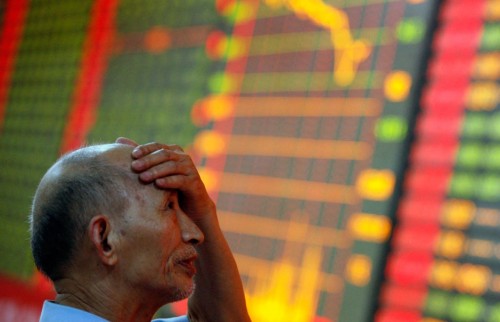
Why?
You’ve asked yourself this question dozens of times before. You’ve created rules for your systems, written out a trading plan, put post-it notes on your monitors, yet you still do this.
Why?
There is one reason which has been present with you since your first trade, and is there right now which I’m going to tell you about.
And the answer is a biological one.
From an evolutionary perspective, we were not built to be traders. We are biologically wired in our brains NOT to be successful traders. This is one of the main reasons why so many traders fail. To have a successful trading mindset, we have to actually UNDO millions of years of wiring and evolution.
Biologically Wired to Not Trade Successfully
Our brain has gone through several evolutions which helped us to adapt to our environment. We have our older brain, which is referred to as our ‘reptilian’ (or lizard) brain. Our ‘limbic brain’ sits right on top of our reptilian brain & brain stem (where we send signals to the rest of our body).
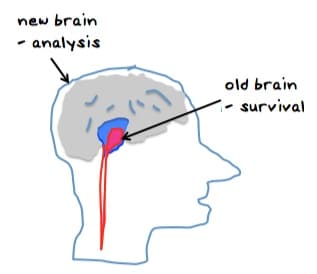
It’s actually a brilliant design, because if we need to get the F-out of dodge (i.e. are running from a Lion that wants to eat us), it helps us send a quick signal through our body to fight or run. This is known as our ‘fight or flight’ mechanism, and it’s hard wired into all of us.
Now keep in mind, this system can react in less than a second activating all kinds of hormones giving us the feeling we will be in a fight to the death, or need to run in panic mode. It can control our emotions, fears and thoughts in the blink of an eye.
Unfortunately, it causes us to make quick and rash decisions, which in 99% of all trading situations does not help.
To top it off, there is another portion of our brain which hurts our trading performance. It is a portion of our brain called the ‘amygdala’, which is biologically wired to see the negative in our environments more than the positive.
Why?
Because negative threats represent a greater danger to our survival than positive ones. It takes us about half a second to notice a threat, yet it takes several seconds for us to recognize something that is good for us.
And there you have it. This is the reason – this is why you take profits too early. Every threat and ‘negative’ piece of information on the chart tends to activate this ‘fight or flight’ response in us and a potential danger.

This leads us to register it as a ‘threat’ to our winning trade. When this happens, our brain will create a rush of hormones, thoughts and emotions which produce a tremendous impulse for us to close the trade early.
The trade may be following all your rules for entry, have a ton of positive factors supporting the trade, yet one negative candle against us – and we panic. We worry it will go negative. We fear it will turn into a loss, and we close the trade early.
This is why so many traders fail and do not make money consistently. You are constantly fighting your biology and thousands of years of evolutionary wiring to trade consistently – to hold onto winning trades. We are swimming upstream against our biology to have a trading mindset that is geared towards success.
How Can You Change This?
Luckily, there is a way to change our forex trading psychology and the internal wiring we are all born with. There is a way to rebuild your neural connections to hold onto winning trades without the fear, worry or panic. There are ways to build new neural pathways to trade successfully.
We are building this program as we speak – to help you re-wire your brain for success, to rebuild your neural pathways. Instead of closing your trades early, you hold on till your full profit target for a large winner. Instead of making emotional trading decisions, you are wired for successful trading.
We have already created one program for this via our ERT training, which many traders have already taken, and are noticing huge changes – both in their trading, and in their lives.
The second program for this will be announced shortly with the same goal – to re-wire your brains for successful trading.
The learning process never ends for a trader. The market is always evolving and you have to adapt. Algorithmic trading was about 3% of the FX market in 04′. Now 28% of it is just HFT’s alone! Think that has changed the intraday price action? Absolutely!
Thus, you must always be learning, evolving and challenging yourself. There are always refinements and greater depths to what you are doing, whether you are trading price action, ichimoku or other rule based systems.
Regardless of your skill level in trading, you are going to make mistakes. I make mistakes, but I learn from them with alacrity. I quickly analyze what I did wrong, visualize what I would do differently, clear my mindset and get back to business. The difference between a professional & beginning trader is usually two-fold;
1) they make less of the typical mistakes beginners do
and
2) they rebound much faster, control the damage quicker and get back to business
Analyze your last year of trading in your journal. I’m willing to bet if you eliminated just one or two mistakes you continually repeat, your current losing year would have been a profitable one. If you ended the year break-even, then it likely would have been highly profitable.
Eliminating mistakes is one of the fastest ways to profitability. The sooner you discover, eliminate and transform them, the faster your equity curve will climb.
Thus, in the spirit of this, I will share my top trading mistakes for 2012 in the hopes you can learn from them.
1) Trading and Investing are Two Different Things
I am a trader first and foremost, but I also am invested long term in physical gold.
To ‘invest’ in physical gold, you constantly have to understand what is happening in the physical AND paper market. It helps to study central bank buying of gold, physical supply, how it is used as a safe haven against bad governments, etc.
However, I also trade gold using intraday price action strategies, and sometimes my methods/opinions on one get mixed with another. Long term I am a bull on gold, and have been since 2004/05 back at the $400 levels.
Many times in the last 3 months, I was long paper gold. Yet intraday price action would be screaming for me to get short. My broker allows hedging – so why wasn’t I shorting physical? Because my long term investing bias was interfering with my short term trading methods.
One of my top trading mistakes for 2012 was forgetting that I am a trader first and foremost, and to not let my bullish bias or investing strategies interfere with an obvious price action setup.
A good example is I bought paper gold at $1633, which I blogged about as a high probability breakout. At one point I was up 51x my risk, meaning for the 300 pips I was risking, I was up about 15200 pips.
By the time I walked away from the trade, I was only up 6500 pips. I didn’t follow exit rules because of my long term investment bias.
Remember, a trader and investor are two different things, and you must understand the difference.
2) Trading Against Impulsive Price Action
One of the base models I use for trading is understanding impulsive and corrective price action.
To sum it up briefly, impulsive price action moves are when the institutional market is heavily buying or selling and driving the price action directionally. With training and practice, you can learn to read the order flow behind price action, particularly by identifying these impulsive price action moves.
A few times this year I traded completely against these moves. Case in point – meet exhibit A, ironically on……wait for it……Gold!
Gold 4hr Charts
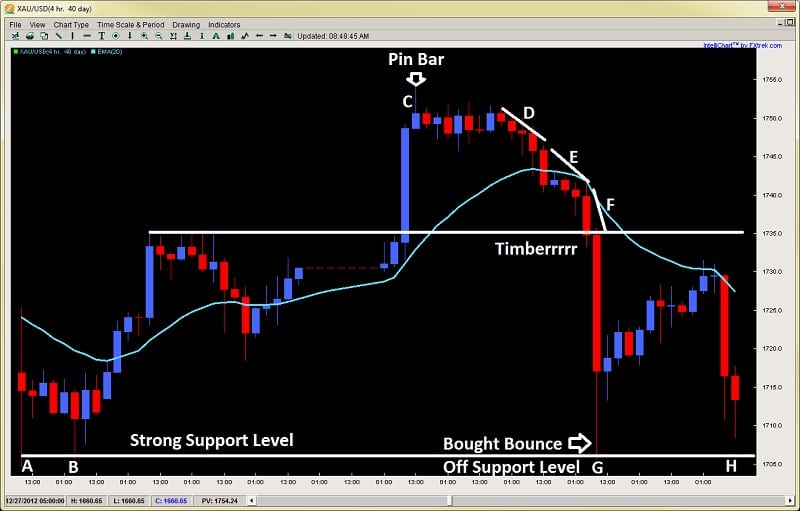
Looking at the chart above, you will notice on the bottom left points A and B which showed strong price action rejections. Buyers stepped in at this level, driving prices almost $50 higher in about 6 days.
At C you will notice the pin bar at C which was the second sign the bullish move was ending. Any idea what the first was?
Regardless, after the pin bar, price action failed to make a HH (higher high) and started with selling off impulsively at D, then more sellers came in at E, and by F, once it broke the role reversal level, price got monkey-hammered dropping $30 in 4 hours.
I had a buy order at the support level at G, so made some profit on the bounce, but missed the fact the market was still showing impulsive price action selling.
So at H what did I do? I bought some again, hoping for a similar move. The result is below, but you get the idea.
Gold 4hr Chart Exhibit B

At the support level where my first long worked out, I went long again at H and the same level. Shortly after I was stopped out.
Instead of realizing I was trading against the trend and impulsive price action, I was looking for a reversal. I consequently missed the obvious breakout pullback setup at the same level I was looking to get long, which then became a role reversal level. This is what happens when you trade against the trend and your system.
Not only do you miss several good with trend setups, but after you get stopped out, you usually miss the follow up trade from your price action system to take advantage of the move.
3) Let Your Trade Run Until Your System Tells You To Exit
Barring any extreme or black swan event, I usually just let my trade run until my rule based system tells me to exit.
However on a recent buy on the GBPJPY, after getting a great entry and banking about +300 pips, I exited the trade, even though my system was still telling me to hold long and hadn’t given an exit signal.
Looking at the chart below, you can see on the top left at B a critical resistance level which started the massive 300 pip sell off.
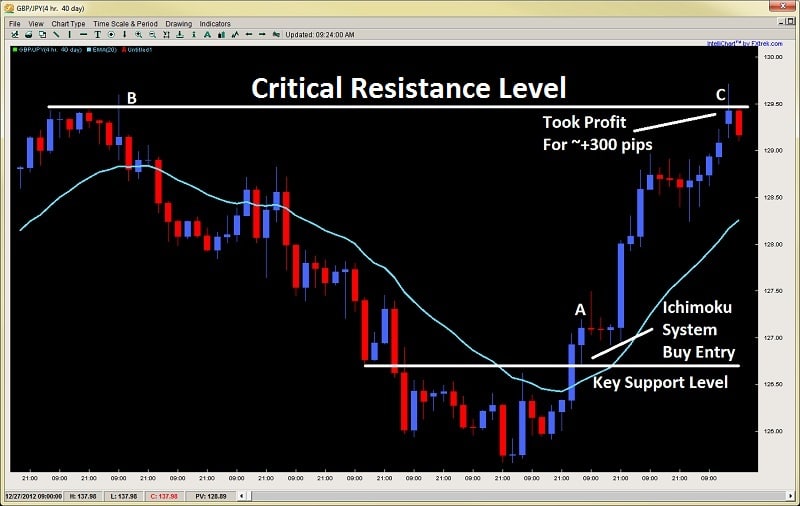
Price started to show signs of exhaustion, and started a reversal. My ichimoku strategy picked up a buy order just above 126.60. Shortly after, price climbed rapidly gunning it for the same resistance level at 129.50. After the weekend gap rejected, I took profit banking about +300 pips.
Not so bad you say…until you look at the chart below.
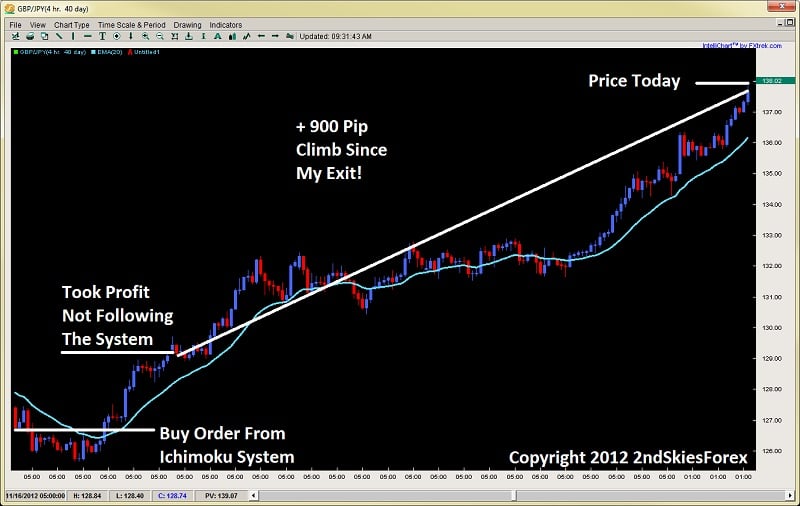
Not only did my system hold on for another + 300 pips, but it gave me a re-buy signal around 132 and is still currently long today. I missed that one as well from being ‘upset’ about exiting early. Needless to say this would have over tripled my profits. Even though my system never gave me an exit, I got out of the position.
Not letting runners run is one of the most costly mistakes a trader can make. Yes, it is important to understand what is a high quality signal, but I’m guessing if you let just 10 of your trades run until the system gave you an exit, you would have made almost double your profits on those 10 trades. For me, it was actually 2.4x more. Food for thought.
In Closing
Part of trading is making mistakes, but a key component of your success is learning from your mistakes and making less of them over time. Regardless of your skill level or how long you have been trading, you will make mistakes. Anyone who only posts their successes and doesn’t admit to their failures is hiding behind a wall of fear and a false reality.
I make mistakes and I’ve been doing this for 12 years. But I learn from them continually and make less of them as time goes on. This translates into more profits, smaller drawdowns, less emotions, and a smoother equity curve.
Eliminating mistakes is the fastest path to making more profits. But the first step is becoming aware of them. This is where the trading journal comes in handy. If you’ve made 300 trades last year, are you really going to remember every mistake you ever made? Unlikely, this is why you have a journal, to help you become aware of your mistakes.
The second step is to actively work on eliminating and transforming them. If you repeat a mistake over and over again, then the cause is likely psychologically, and something that can be re-wired through ERT training and developing a successful trader mindset.
But the bottom line is you can transform your mistakes into strengths, and most definitely into greater profits. In almost all cases, making less mistakes can be the difference between a winning and losing day, month or year. And in almost all cases – will lead to significantly greater profits.
Kind Regards,
Chris Capre
Today’s lesson is just to give you some brief tips on how to develop a successful forex trading mindset. Without a profitable and successful trading mindset, you will be swimming upstream against your emotions/fears, thoughts and unconscious habits which undermine your success. Perhaps you have noticed this already in your trading, almost as if you are being kept at arms length from trading profitably.
Your trading mindset is really a product of three things;
1) your neuro-physiological wiring
2) your mindset or level of mindfulness
3) your psychological conditioning
Too many traders always seem to feel it is the system which is holding them back from being profitable. Yet I teach the same price action strategies to hundreds of people, and while many are profitable, others using the same systems are not.
What is the difference between the two? Their Trading Mindset.
So I will briefly share some key points about the mind, the brain, and how you can help develop a successful trading mindset. For today’s part 1 of the article, I will focus on the first point, and will cover the other two in the following articles.
Neuro-physiological Wiring (i.e. How Your Brain is Wired)
When your brain changes, so does your mind and vice versa. They are integrated and help in your development as a forex trader. Neurons that fire together wire together, and mental activity helps to create new neural structures (positive or negative ones). Simple unrelated thoughts (about past, present or future) can having significant effects on your trading mindset.
It should be noted there is no compartmentalized portion of your brain just for forex trading. Everything in your past conditioning and wiring can and will have an effect on your trading success.
The good thing about this is – your mind is neuroplastic and can be re-wired into a whole brain state. Any subtle changes in brain chemistry, heart rate, etc. can and will alter your concentration, memory and emotions (all critical for trading successfully).
Fantastic ways to alter your neural programming and to build a whole brain state for better performance + a successful trading mindset are a) ERT training, b) a brain gym or using binaural beats c) right diet and lifestyle.
As a whole, your brain has three fundamental functions:
1) Regulation (physiological processes necessary for survival, perception, etc. through exciting or inhibiting neurons)
2) Learning (forming new synapses, pathways and circuits by strengthening or weakening current ones)
3) Selection (working with perception and experience moving towards what is valuable or not)
These three fundamental functions are critical for all mental activity – especially in forex trading.
Regulation
If you have not taught your brain and central nervous system to relax, to breathe slowly and more deeply, your trading will likely be more emotional, panicked and stressed. You will miss details and make irrational decisions (not trading your strategy, trading with fear, risking too much). But you can train your brain to regulate the physiological and mental activity through exercise, yoga and breathing practices.
Learning
The best ways to accelerate the learning process is to a) work with a trading mentor, b) practice, study and train to use rule based systems, and c) to train in the markets which provide a feedback loop for you.
Selection
In concert with the learning process, your experience in the markets will help provide a rich context and feedback to help you move towards what is beneficial and valuable for your trading. This is done by discovering what works and consistently making profits, while moving away from what does not.
Your brain has survival strategies (physical/psychological) hard wired into its cells, and these can help or hurt your trading. It should be noted, when a survival strategy runs into a high energy (or uncomfortable) situation, the brain will create alarm signals that can and will influence mental activity.
Some of these strategies are;
1) to look for stability/solidity in a constantly changing world
2) to divide what is connected creating a subject/object relationship
3) to avoid pain/threats and seek pleasure
Can you see how these strategies may effect/hurt your trading? Any of the three stand out?
Food for thought, but perhaps you can explore how they have influenced your trading. This is the first step to building awareness around what makes you tick as a trader, and what you need to work on mentally. Overcoming and transforming these obstacles can (and likely will) mean the difference between making money and losing money.
Regardless, each of these three fundamental functions and strategies will play a critical role in building a successful trading mindset. Additionally, how your brain is physically wired will either support (or hamper) your learning process.
The good thing is, you can completely train and re-program yourself to be hard wired for successful forex trading. The only thing missing is working with a proper mentor, a training program, and the right effort.
I hope this helps gives you insights into the mind and why developing a successful trader mindset is important.
I’ll explore more in part two of this article series, so stay tuned, and happy holidays to all!
Kind Regards,
Chris Capre
Inspired by watching The Dark Knight Rises on my recent flight, I wanted to write an article about trading and fear. Of all the emotions that affect a trader negatively, fear would be at the top of the list.
Ask yourself;
-Have you ever not pulled the trigger when your system gave you a signal?
-Have you ever been paralyzed by a series of losses (or one big loss) that prevented you from taking a trade?
-Have you ever made a poor decision because you were thinking of your last losses?
-Has the fear of losing money ever affected you from doing what you know would help your trading?
If any of these have happened to you, do not worry, you are not alone, and are likely in a large group of traders – a majority if anything.
Fear is a highly powerful emotion that has paralyzed many at one moment or another. It has confused you, separated you from your intelligence, your wisdom, your ability to make a good decision. This is true not just in trading, but also in life.
Of almost every mental, emotional or psychological issue I’ve encountered with traders, fear has always been at the root of the issue.
Fear of losing money, of hitting your equity threshold and trading too large, fear of failure, fear of being wrong, fear of making a mistake, fear of about anything you can imagine, with fear as the common denominator.
There are really three stages to fear for a person, especially in forex trading, which I will briefly go over, and talk about how to remedy your fears.
Stage 1 – Paralysis and Confusion
Being such a powerful emotion, at a base level, fear tends to cloud our judgment when experiencing fear on any level. If we are not aware of it, or do not know how to deal with it, it will paralyze us, such as paralysis analysis. It will actually reduce our mental and cognitive resources, forcing us to use a more primitive portion of our brain called the Limbic System (our most ancient brain). You may have heard this as fight or flight, but really when fear takes a hold of us, we are separated from our natural intelligence in the moment we most surely need it. We become the deer on headlights, frozen when we should act. And this leads to confusion.
By having no awareness of fear, or being run over by it, we take the path of confusion, and this leads to bad trading decisions.
Perhaps not pulling the trigger, even though our system has a signal. Perhaps leveraging too little for being afraid of losing money. Whatever the reason, fear at the basic level is of no use to us, and if anything at all – is highly damaging to our life, and our trading performance.
The only way to pass stage 1 of relating to fear, is to first become aware of it, then realize how it affects you. Once you do this, you have the ability to use fear, which is just a highly potent energy.
If you have trouble becoming aware of fear, there are several options, such as doing yoga, practicing meditation before trading, listening to binaural beats, or using a neurofeedback device to monitor your neural activity. Any will work in their own way, but they will help you become aware of it to get past stage 1. Without it, you will forever be a servant to your fears. But after this, you can use fear to your advantage which is the next stage.
Stage 2 – Using Fear To Your Advantage
Imagine being aware that you have the fear of failure. It could, like in stage 1 paralyze you from making an important decision.
But…it can also be used to enhance your performance. It can be used to your advantage to become a better trader.
In The Dark Knight Rises, Batman wasn’t afraid of dying, and this lack of fear of death separated him from an energy – an energy to do something beyond normal. He eventually used this fear for his gain.
How Can Fear Be Used For Trading?
Imagine being afraid to fail, which in stage 1 means you are paralyzed. But if you have the awareness of it, recognize your fears, you can use this energy (which is all fear and emotion are), to perform better. You can use this to work harder, to do the things that build your skills, to practice your technique and system more, to put more hours behind the chart, to fear failure more than inaction.
Fear can be used to push you to the next level, and it is often fear which is at the root of someone who is highly driven. They fear the outcome of failure, so they work harder to make sure it never happens. In stage 2, fear is used as an energy to enhance your performance, to work harder than the next person, to not accepting mediocrity as you know how it sets you back. Instead of being paralyzed and confused by fear, you transform it into a vehicle for your success.
If done correctly, it can bring you a tremendous increase to your efforts which can lead to success. And although this may seem like a victory, it is a limited one – and certainly not the golden prize, which is the next stage. Generally successful traders have fear, but they use this to their advantage and have built a successful trading mentality.
Stage 3 – Transformation of Fear
You always hear about fear and greed in trading, but this comes from the belief they cannot be overcome. This is shortsided and misunderstands the mind. Fear can be transformed and something you are rid of. Imagine how you would be able to act in trading and life if you were without fear of death, without fear of loss, without fear of failure?
Imagine if you never had to deal with those energies, that all your intelligence and wisdom was directed to the problem at hand, to the moment? You would never even have to take the side-road of using it for your advantage. You could just act freely, uninhibited and without hesitation. There would be nothing to protect, no future scenario you worried about, and nothing to lose.
Fear does not have to be a part of your life and especially your trading.
Just imagine what you could do without fear? Imagine if your resources were used to advance your trading and life? Go over your trading journal and look at how many times you hesitated, with the trade ending up a highly profitable winner? I’m willing to bet if you turn those non-trades into profits, or losing trades into winners, you would have a completely different account than you do today.
The good thing is you do not have to become a buddhist monk or a shaolin warrior to overcome fear. With a little ERT training, and willingness on your part, fear can be transformed. Your neural pathways can be reprogrammed towards success, intelligence and wisdom, all without fear. It’s really just a question of will, effort and a desire to take things to the next level in trading and life.
On An Ending Note
Ask yourself where you are in your experience with fear and trading, and then ask yourself what you have done about it, and what you would do to turn the corner. Ask yourself what are you willing to do to become a successful trader. I have tons of students email me saying they will do anything. But when the moment comes time and time again, they choose the path of fear, they choose to not take the risk which is what this game is about (financial and psychological).
Our decisions and focus determine what we manifest in trading and life. The question of how it ends is always within you. In reality, trading is putting yourself in front of a mirror where you are given two choices;
-either become prey to your weaknesses, confusions and fears
-or rise to overcome them and empower yourself to live a different life
Regardless of which path you take, I hope this forex trader psychology article has provoked, challenged and inspired you to look at fear in a different way, and given you options to take your trading to the next level.


